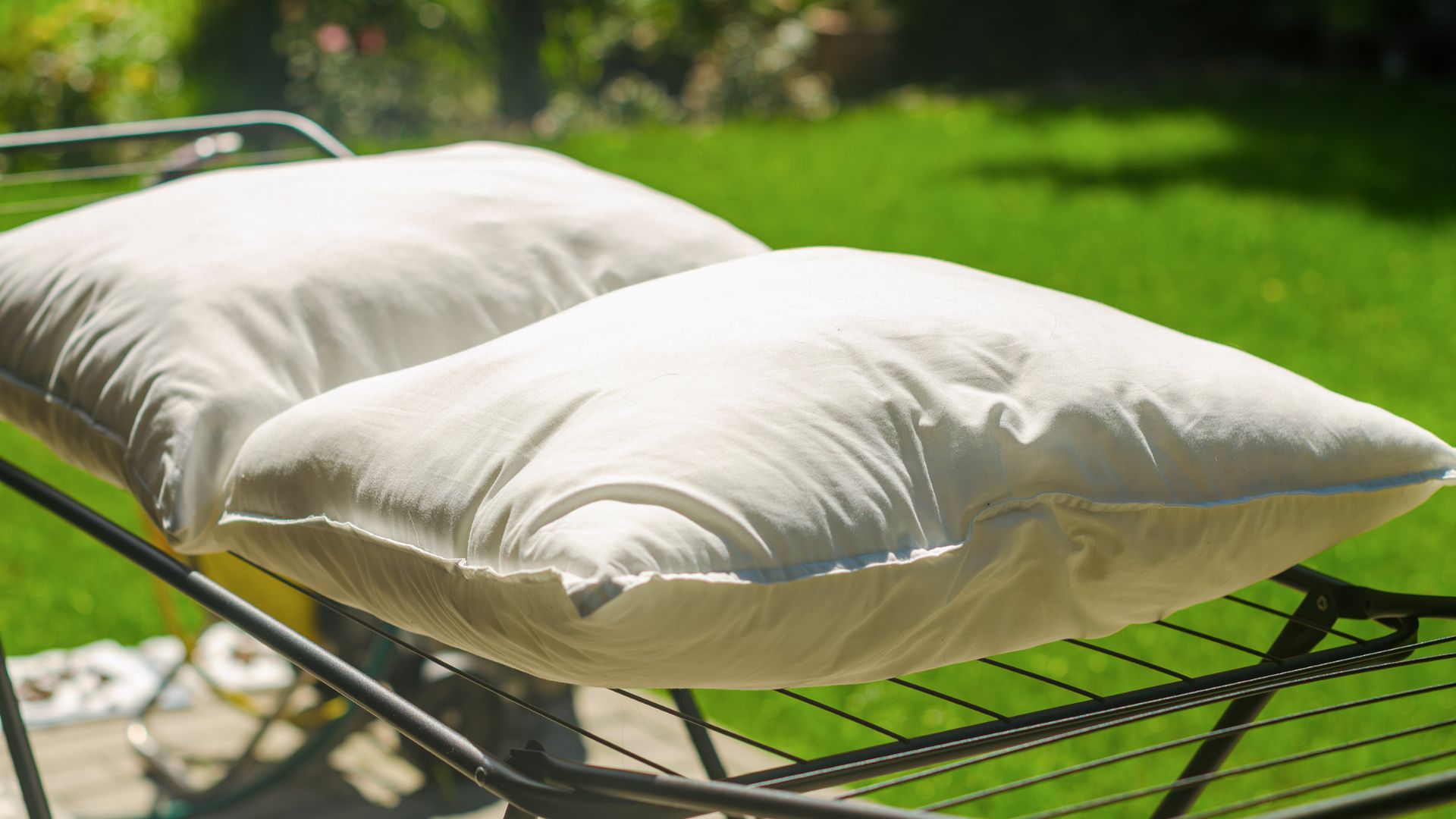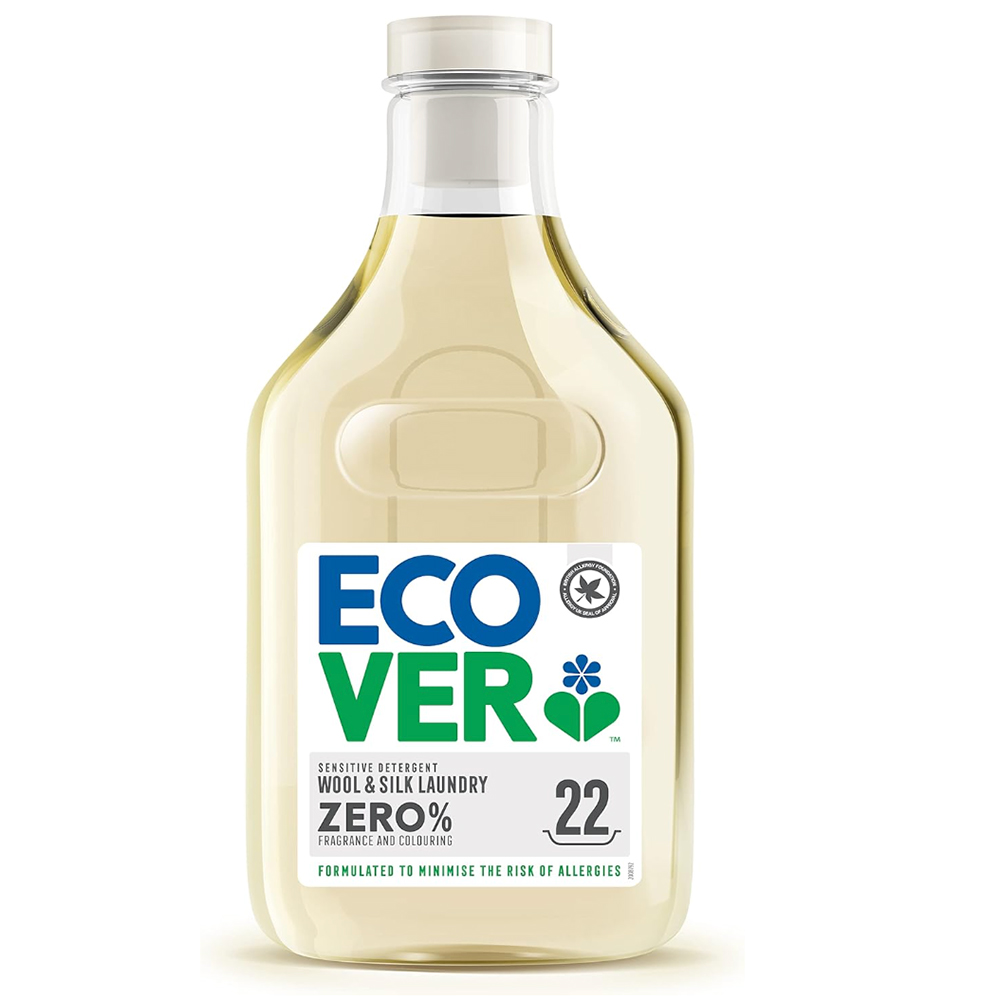Cleaning expert reveals shocking reason your pillow needs cleaning more often than you think
If you can't remember the last time you cleaned your pillows, you'll probably throw them in the washing machine after hearing this


You might run a tight ship when it comes to cleaning your bedding regularly, but are you cleaning your pillows enough? The weight of them might just prove you're not.
Aside from how often you should wash your sheets and clean your mattress protector, did you know your pillows could be the worst culprit for hidden germs and dirt buildup?
Talking on This Morning, 'Queen of Clean' Lynsey Crombie revealed that half of your pillow's weight is actually made up of dead skin cells. Shudder.
Reason your pillow needs cleaning more often: expert reveals all
The reel posted by This Morning on Instagram (@thismorning) shocked users as presenter Ben Sheppared reveals, "Here’s a horrifying, truly horrifying fact for you, half of the weight of the average person’s pillow is actually made up of dead skin cells."
So, unless you've been cleaning your house like a professional every month, the chances are your pillow is a little heavier than when you first started sleeping on it.
"I did put this to the test a few years ago," starts cleaning expert Lynsey. "So when I first heard that, I just got a standard pillow, so if you buy one new, just weigh it on your kitchen scales and then give it six months, and just look at the difference."
A post shared by This Morning (@thismorning)
A photo posted by on
That's right, even the best pillows on the market will get heavier with use thanks to the bodily fluids we tend to lose when sleeping.
Sign up to our free daily email for the latest royal and entertainment news, interesting opinion, expert advice on styling and beauty trends, and no-nonsense guides to the health and wellness questions you want answered.
"So I always think, when you cook pasta at home and the pasta shells hit the water, they expand and weigh more, don’t they? It’s the same with the pillow, it is because of your bodily fluids from your head, saliva, and eyes. I mean, this is pretty disgusting," explains Lynsey.
Now you've been traumatised, you're probably wondering how you can fix this or avoid it happening completely. Well, Lynsey recommends investing in some thick, top-quality pillow protectors that will act as a barrier to these damaging fluids.
You can clean the protectors very easily every time you wash your sheets, and this will stop or slow down the process of your pillow collecting those nasty particles. If you struggle with allergies, you can pick up some hypoallergenic protectors that will keep dust, dander and pollen at bay.
How often should you clean your pillows?

Although you might be wondering how often you should change your pillows after this frightening discovery, simply cleaning them can stop this buildup from happening.
Catherine Green, sustainable cleaning expert at Smol, says, "Most pillowcases can go in your wash every week or so with the other parts of your bedding, but the part that’s often forgotten about is the actual pillows underneath, which should be cleaned every 4-6 months. Why? Because they quietly collect all sorts of hidden grime from dead skin cells to dust mites, even if they look clean."
"The material also affects how often you should be putting them through a wash! Foam, gel and hypoallergenic pillows generally hold up better against dirt and dust mites, while wool and feather ones may need a little more care. As always, check the care label before anything else, as this will contain the most detailed information relevant to your pillows," she adds.
Regular cleaning will also help you remove any yellow stains from your pillows or prevent them from appearing altogether.

Having worked for the cleaning brand Smol since its creation, Catherine has tested each and every product before its release. She is also involved with the production team's process and provides feedback for the development of the company's products.
How do you deep clean a pillow?
So, how can you wash your pillow properly at home and guarantee a thorough, hygienic clean? Well, that depends on what type of pillows you have.
"Pillows can be made from a variety of different materials, so you must always start with the care label; it’ll tell you if your pillow’s safe for the washing machine or if it needs a gentler approach," explains Catherine.
For foam pillows, she recommends starting with a mixture of warm water and a squirt of washing-up liquid. Then use a soft cloth to gently sponge the surface, after that rinse with clean water and allow to air dry completely before putting it back on your bed.
If you have polyester or down pillows, you can use your washing machine. Catherine advises, "Drop a laundry capsule into the back of an empty washing machine drum, then add your pillows. Ideally, in pairs to balance the load. Choose a cool wash with a standard spin and then let them air dry fully; some can be tumble-dried, but double-check the label first."
Catherine shares a daily habit to keep your bed feeling extra fresh. She says, "I recommend pulling back the covers each morning to let your bed breathe. It’s a tiny habit that can help cut down on things like moisture and allergens."

Emily joined woman&home as a staff writer after finishing her MA in Magazine Journalism from City University in 2023. After writing various health and news content, she now specialises in lifestyle, covering unique cleaning hacks, gardening how-tos, and everything to help your houseplants thrive.
